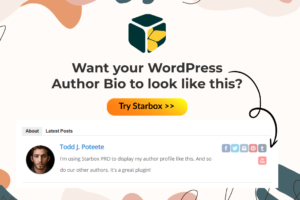In an era where the internet is all-pervasive, reaching, engaging and retaining audiences is no mean task. And with so much content available online, gaining traction is easier said than done because the proliferation of choice has made it simpler than ever for target audiences to cherry pick.
So, how can we copywriters keep our heads above the metaphorical parapet? Before we get into that, please indulge us…
A BRIEF HISTORY OF COPYWRITING
Copywriting has been around since the days of papyrus but its formal existence can be traced to more recent times. In 1880, ad-writer John Emory Powers was engaged to create promotional material for Lord & Taylor, an American chain of department stores which operated (in bricks-and-mortar form) from 1824 until 2022.
Rather than adopt the tried and tested marketing formula – exaggeration, persuasion, overpromising – Powers produced concise, factual, relatable and scannable text. Consequently, Lord & Taylor achieved a substantial uplift in revenue (and profits).
THE MORE THINGS CHANGE, THE MORE THEY STAY THE SAME
Essentially, Powers is the godfather of contemporary copywriting because his writing style and technique still apply. The ways in which we generate content, and the spaces we use to promote it, have evolved considerably since Power’s days – but the copywriting goal remains the same: to generate engaging, readable, fact-based text which provokes a positive response.
EXPANDING OPPORTUNITIES
One thing that Powers and his ilk never had to contend with was the dizzying proliferation of delivery systems we have today. In the 19th century, there were really only newspapers, periodicals, flyers, sandwich boards, posters and street barkers to rely on. Then came radio, cinema and television, each medium contributing significantly to the evolution of marketing habits – and with the advent of the internet, the possibilities were virtually endless.
INFORMATION SUPERHIGHWAY
As far as delivery systems go, it’s hard to conceive of something that can trump the internet. It provides the user with access to a breadth of information that could only have been dreamed of mere decades ago. And it enables marketing and advertising agencies to enjoy far greater outreach than could ever have been conceived during Powers’ lifetime.
POWER AT OUR FINGERTIPS
“The pen is mightier than the sword.” So said writer and politician Edward Bulwer-Lytton in 1839, and his adage still applies. Words are powerful, and can be highly evocative when formulated to create sentences that engage, resonate and inspire.
Adopting the John Emory Powers approach in the digital age makes perfect sense. In many instances, blueprints for success have been long-established. After all, no one has so far managed to reinvent the wheel.
On that note, and with copywriting in mind…
KNOW YOUR AUDIENCE
Understanding the demographics, interests and tastes of your audience will enable you to create content that is easier to relate to.
ENGAGE THE READER
Attention spans are short, which means that roughly 80% of people don’t read beyond the headlines. By starting with a compelling headline and proceeding with well-researched writing that entertains as much as it educates, you’ll enjoy a recipe for success – and if your words manage to inspire, all the better.
TELL A STORY
Provide a beginning, middle and end. Introduce the premise and identify pain points, those things that frustrate and prevent people from realising their potential. We’re here to describe a solution. Whether talking about a product or a service, it’s our job to write relatable content that focuses on the benefits – and inspires the reader to take positive action.
CUT THE C**P
Err on the side of simplicity, even if you’re writing about something complicated – especially if you’re writing about something complicated. The reader has chosen to read your article because they want to learn something. You can help their comprehension by writing brisk sentences and creating short paragraphs. Bullet points are very useful in this respect. Oh, and be sure to avoid flowery text and hyperbole.
And rather than clutter the page with acres of text, stick to the salient points while providing the reader with opportunities to learn more. This is where clickable tabs, buttons and icons play an important part. They not only break up the writing, they provide visual appeal. This of course applies to videos and testimonials, which can be used to enhance your content.
SEARCH ENGINE OPTIMISATION
Relevant keywords, organically integrated will help make it easier for your target audience to find your content.
NO TIME LIKE THE PRESENT
The storytelling analogy goes deeper than mere narrative construction, it also implies drama, which we touched upon with pain points. Drama suggests urgency – and so we should leave the reader wanting to take the next step, which is best stimulated by a simple and direct call to action.








